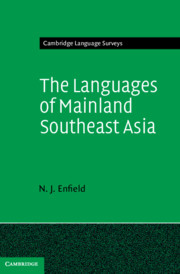Refine search
Actions for selected content:
41 results
The Enemy of My Enemy is My Friend: Transnational Ethnic Khmu Anti-Lao PDR Insurgents during the Late Cold War
-
- Journal:
- TRaNS: Trans-Regional and -National Studies of Southeast Asia , First View
- Published online by Cambridge University Press:
- 18 July 2025, pp. 1-23
-
- Article
-
- You have access
- Open access
- HTML
- Export citation
Logistics behind revolution: Mengla and the Laos-Thailand connection in the Cold War
-
- Journal:
- Modern Asian Studies , First View
- Published online by Cambridge University Press:
- 02 July 2025, pp. 1-20
-
- Article
- Export citation
Hmong Transnational Marriages: Nuancing Stereotypes
-
- Journal:
- TRaNS: Trans-Regional and -National Studies of Southeast Asia , First View
- Published online by Cambridge University Press:
- 19 February 2025, pp. 1-18
-
- Article
-
- You have access
- Open access
- HTML
- Export citation
8 - Conclusion
-
- Book:
- The Financial Statecraft of Borrowers
- Published online:
- 12 December 2024
- Print publication:
- 19 December 2024, pp 268-292
-
- Chapter
- Export citation
2 - US Military Strategy in the Nixon Era
- from Part I - The Late Vietnam War
-
-
- Book:
- The Cambridge History of the Vietnam War
- Published online:
- 02 January 2025
- Print publication:
- 28 November 2024, pp 45-71
-
- Chapter
- Export citation
12 - Laos at War
- from Part I - The Late Vietnam War
-
-
- Book:
- The Cambridge History of the Vietnam War
- Published online:
- 02 January 2025
- Print publication:
- 28 November 2024, pp 279-296
-
- Chapter
- Export citation
Unlikely Allies: Lao Insurgent Perspectives of Armed Group Transnational Collaboration in the Emerald Triangle Region during the Third Indochina War
-
- Journal:
- TRaNS: Trans-Regional and -National Studies of Southeast Asia / Volume 13 / Issue 1 / May 2025
- Published online by Cambridge University Press:
- 26 November 2024, pp. 19-39
-
- Article
-
- You have access
- Open access
- HTML
- Export citation
Ritual, war, and opium: Infrastructural sedimentations in the ethnohistory of the Mun (Lanten Yao) of Laos
-
- Journal:
- Modern Asian Studies / Volume 58 / Issue 5 / September 2024
- Published online by Cambridge University Press:
- 09 June 2025, pp. 1299-1341
- Print publication:
- September 2024
-
- Article
-
- You have access
- Open access
- HTML
- Export citation
5 - De-Americanization, 1968–1973
-
- Book:
- Vietnam's American War
- Published online:
- 05 December 2024
- Print publication:
- 13 June 2024, pp 244-307
-
- Chapter
- Export citation
6 - Commando Hunt V–VII and Lam Son 719: 1971–1972
-
- Book:
- Tactical Air Power and the Vietnam War
- Published online:
- 04 January 2024
- Print publication:
- 18 January 2024, pp 139-162
-
- Chapter
- Export citation
14 - Bringing Empires Back in: The Imperial Origins of Nations in Indochina
- from Part I - Imperial and Postcolonial Settings
-
-
- Book:
- The Cambridge History of Nationhood and Nationalism
- Published online:
- 08 November 2023
- Print publication:
- 09 November 2023, pp 300-322
-
- Chapter
- Export citation
Conflict and Elite Formation in Thailand, Laos and Cambodia
-
- Journal:
- TRaNS: Trans-Regional and -National Studies of Southeast Asia / Volume 11 / Issue 1 / May 2023
- Published online by Cambridge University Press:
- 20 July 2022, pp. 17-29
-
- Article
-
- You have access
- Open access
- HTML
- Export citation
For Profit or Patriotism? Balancing the Interests of the Chinese State, Host Country and Firm in the Lao Rubber Sector
-
- Journal:
- The China Quarterly / Volume 250 / June 2022
- Published online by Cambridge University Press:
- 05 July 2022, pp. 332-355
- Print publication:
- June 2022
-
- Article
-
- You have access
- Open access
- HTML
- Export citation
Harden the Hardline, Soften the Softline: Unravelling China's Qiaoling-centred Diaspora Governance in Laos
-
- Journal:
- The China Quarterly / Volume 250 / June 2022
- Published online by Cambridge University Press:
- 05 July 2022, pp. 397-416
- Print publication:
- June 2022
-
- Article
-
- You have access
- Open access
- HTML
- Export citation
3 - Chinese Non-Traditional Security Governance in the Greater Mekong Subregion
-
- Book:
- Fractured China
- Published online:
- 21 October 2021
- Print publication:
- 28 October 2021, pp 121-165
-
- Chapter
- Export citation

The Languages of Mainland Southeast Asia
-
- Published online:
- 22 March 2021
- Print publication:
- 01 April 2021
Drug Trafficking in the Mainland Southeast Asian Region: The Example of Vietnam’s Shared Borderland with Laos
-
- Journal:
- International Annals of Criminology / Volume 58 / Issue 1 / May 2020
- Published online by Cambridge University Press:
- 27 October 2020, pp. 130-151
- Print publication:
- May 2020
-
- Article
- Export citation
“Intertribal” Development Strategies in the Global Cold War: Native American Models and Counterinsurgency in Southeast Asia
-
- Journal:
- Comparative Studies in Society and History / Volume 62 / Issue 2 / April 2020
- Published online by Cambridge University Press:
- 30 March 2020, pp. 421-452
-
- Article
- Export citation
7 - When Money Runs Low and Regime Overthrow
-
- Book:
- Rules and Allies
- Published online:
- 15 July 2019
- Print publication:
- 25 July 2019, pp 179-202
-
- Chapter
- Export citation
